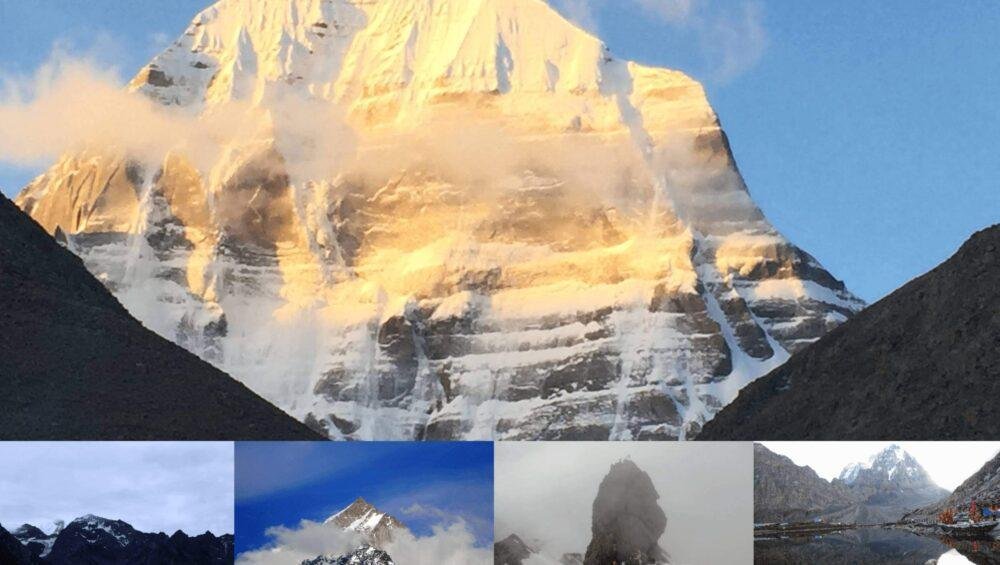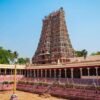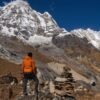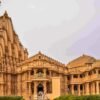Years and years have passed but the belief towards cultural beliefs and manifestations never vanished from the hearts of devotees. For millions of years, pilgrims have been drawn to the Panch Kailash Mountains for Pilgrimage Yatra, where the five abodes of Lord Shiva are scattered across the Himalayas. The five majestic mountains where Lord Shiva is believed to reside with Goddess Parvati are Kailash Mansarovar in Tibet, Adi Kailash in Uttarakhand, Mani Mahesh, Kinnaur Kailash and Shrikhand Mahadev in Himachal Pradesh. Each of these peaks stands for a distinct facet of the divine essence and the cultural roots it has ingrained in our being.
Shiva followers travel from all over the world to Panch Kailash because of its many legendary stories, myths and exquisite manifestations. The journey to the Panch Kailash of Lord Shiva in the Himalayas is believed to be quite difficult and requires a lot of courage but it could not stop the hardcore Shaivites from reaching their destinations. Culturally, not just the Hindu community but also the Buddhist, Jain, Chinese, and Bons communities attach great value to these peaks. They are a challenging but incredibly rewarding adventure because of their dispersed locations in Tibet, Uttarakhand, and Himachal Pradesh.
Lord Shiva’s five sacred peaks will evoke feelings of adventure, mysticism, and spirituality in your spirit. Every year, thousands of Shiva devotees travel to these Kailash peaks in hopes of receiving Bhole Baba’s blessings as they believe that the Panch Kailash Yatra offers happiness and salvation along with sacred spiritual & adventure journeys in the Himalayas.
Venture on a spiritual journey with the Panch Kailash Yatra Travel Guide where you will witness stunning scenery blends with age-old customs, pushing your physical limits and enhancing spirit. Here are listed below the Panch Kailash mountain names along with their nearby attractions.
Panch Kailash Names of Lord Shiva
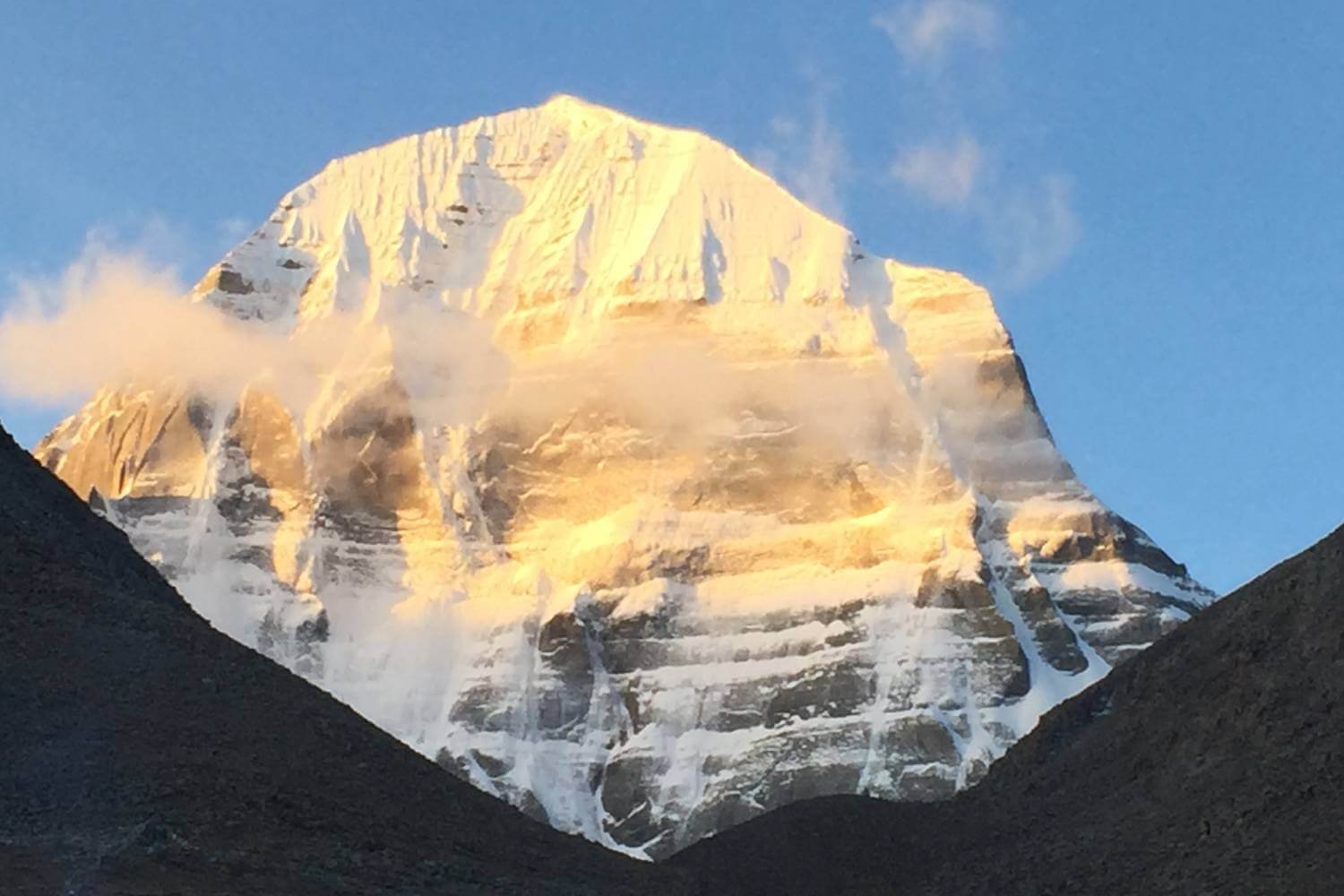
| Name of Panch Kailash | Location |
| Kailash Mansarovar | Tibet |
| Adi Kailash | Uttarakhand |
| Kinnaur Kailash | Himachal Pradesh |
| Shrikhand Mahadev | Himachal Pradesh |
| Manimahesh | Himachal Pradesh |
Also Check Out: Panch Kedar Yatra Itinerary
Kailash Mansarovar in Tibet, Panch Kailash
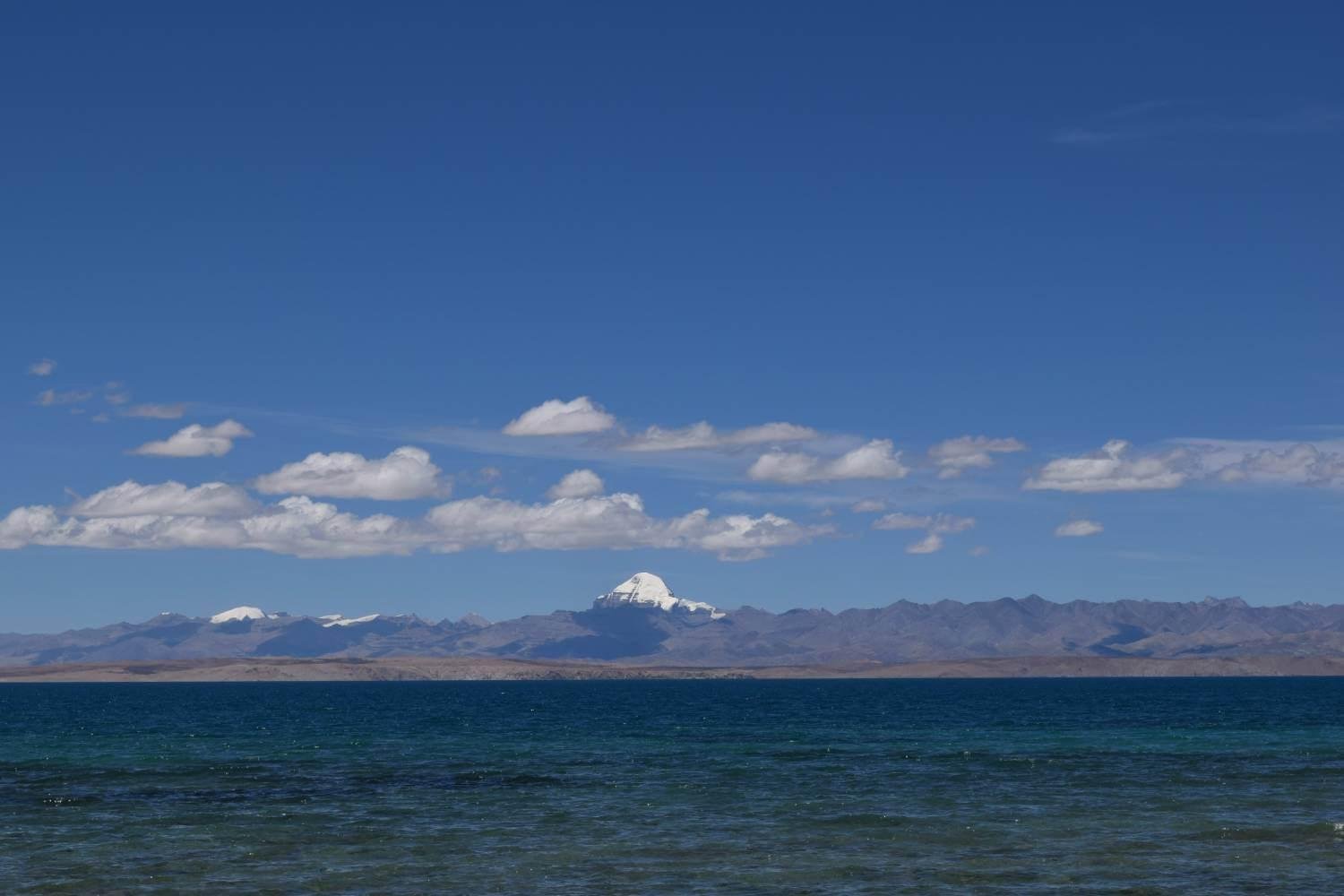
The holy abode of Lord Shiva situated at a peak point of 21,778 feet in Tibet, China is Kailash Mansarovar is said to be among the most renowned cosmic mountains of Hindus, Buddhists, Tibetans, Bonpos, and Jains. Reaching the Kailash Mansarovar is one of the toughest pilgrimage journeys in the world as it is located at a high altitude and is surrounded by steep mountains and harsh weather. The peak is located in a remote and hostile area of Tibet, making the journey difficult.
Being the spiritual centre of the universe, Mt. Kailash is connected to many legends and folklore. In Hindu mythology, this serves as the location of Heaven (Swarga), and whoever comes here is cleansed of all sins. A ritual bath in the Mansarovar lake guarantees passage into Lord Brahma’s heaven, and drinking its sacred water purges one of a hundred lifetimes’ worth of sins. Also, according to mythology, Mount Meru is the celestial peak known as Mount Kailash (Kailash Mansarovar), the homeland of Lord Shiva and Goddess Parvati.
Places to See Around:
- Mansarovar Lake – Located at a height of 15,015, Mansarovar Lake is around 20 to 30 kilometres away from Kailash Mountain. People come to the lake to wash away their sins. The lake changes hues, turning blue along the coasts and greenish in the middle. According to legend, this is the spot where Goddess Parvati bathed.
- Rakshas Tal – The Rakshas Tal is the complete opposite of the Mansarovar Lake in that it includes salty water and is darker in hue. It has little flora or aquatic life, and the inhabitants see it as a terrible omen lake. The lake is a popular tourist destination, yet it is not an auspicious location.
- Yam Dwar: In the Darchen area lies the Yam Dwar, locally called Lang-Tso is said to be the beginning point for the Kailash Mansarovar Spiritual Tour, commonly known as the “Gateway to the God of Death”. Pilgrims travelling to Kailash Parvat are supposed to pass through the gate and not look back.
- Nandi Parvat: Lying below on the south side of Mount Kailash is Nandi Parvat as it resembles the look of Lord Shiva’s bull, Nandi. People visit the mountain during pilgrimage journeys as they believe Nandi conveys all messages and pleas to Bhole Baba.
The Kailash Mansarovar Yatra happens between April and October every year.
Also Read: Best Treks in Himalayas
Adi Kailash in Uttarakhand, Panch Kailash
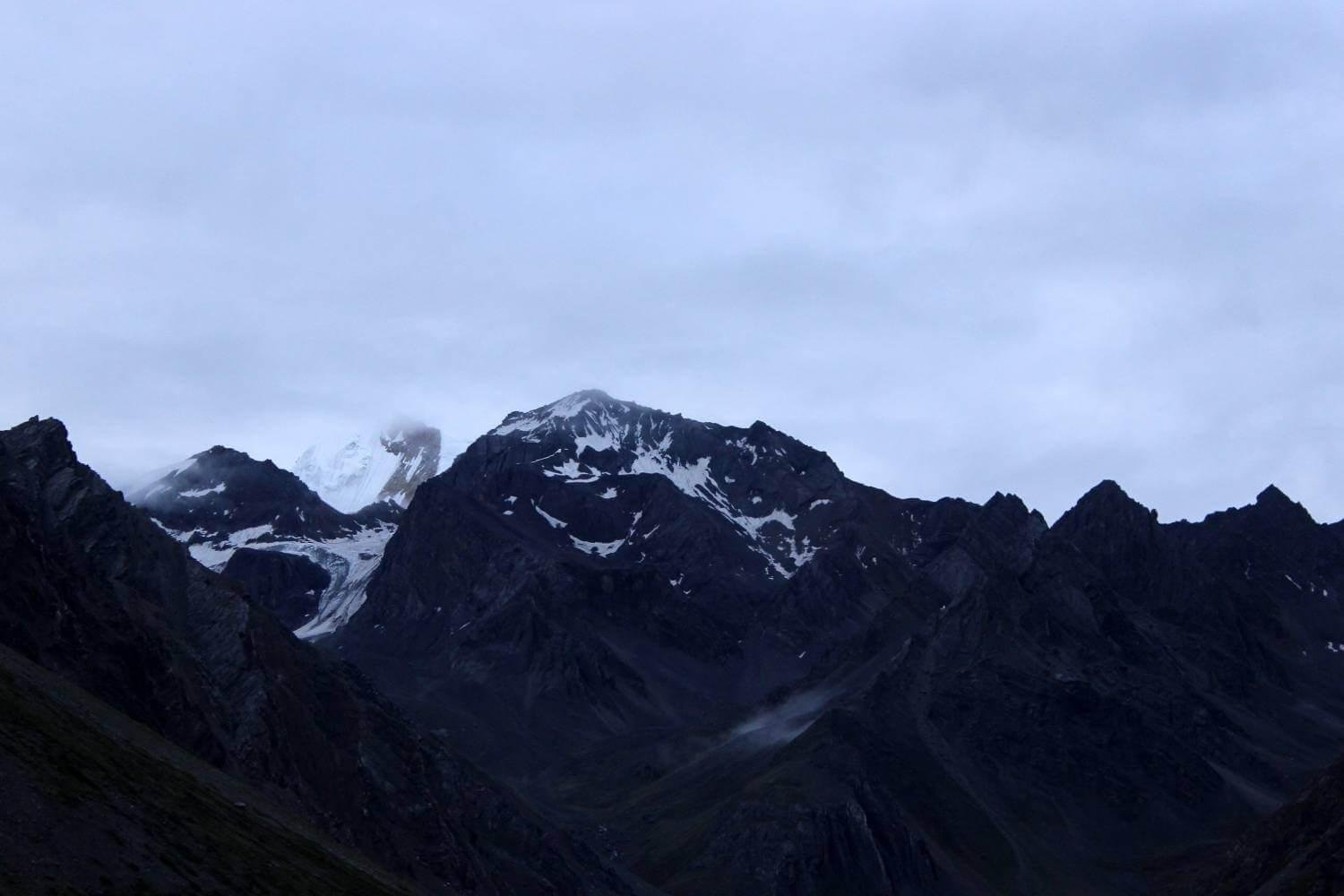
The majestic peak of Adi Kailash, abode of Lord Shiva acquired the appellation Adi Yogi because he practised yoga and meditation at this sacred summit. It is stated that Adi Kailash, sometimes called Chota Kailash or Little Kailash, is an identical replica of Mount Kailash. The Adi Kailash is located in Uttarakhand’s Kumaon area close to the Indo-Tibetan region and is just 50 miles from Kailash Mansarovar. Situated approximately 5945 metres above sea level, it is encircled by a serene and spiritual energy.
According to Hindu mythology, the marriage ceremony of Lord Shiva and Goddess Parvati, which began in Kailash Mansarovar, came to a halt here before travelling to the Triyuginarayan Temple. Adi Kailash summit is close to a shrine honouring Lord Shiva and Mata Parvati as well as the lake Parvati Sarovar. The elevated location of Adi Kailash offers breathtaking views, a tranquil Shiva and Parvati temple, and a strenuous yet worthwhile walk.
Places to See Around:
- Kunti Parvat: Kuti Village surrounds the Kunti Parvat where locals believe that the Panch Pandavas visited with their mother during their journey to heaven and therefore the place got its name. The village is the sole living settlement along the Indo-China border.
- Pandav Parvat: Pandavas while marching towards heaven rested here and the peak site is believed to be the last residence during their exile.
- Brahma Parvat: The Brahma Parvat is dedicated to Lord Brahma. While performing the holy pilgrimage, this mountain can be seen as you go from Kuti Village to Jolingkong.
- Parvati Mukut: A mesmerising mountain peak giving the resemblances of a crown type structure and locals believe it to be the crown of Goddess Parvati. The Parvati Mukut is formed just opposite the Adi Kailash Mountain.
- Parvati Sarovar: The Parvati Sarovar is only a few kilometres away from the Adi Kailash Mountain and is located at a height of 4,501 metres above sea level. The water reservoir is believed to be the bathing spot of Devi Parvati and devotees come to take a dip in the holy water and often carry the water with them.
Also Read: Best Treks in Uttarakhand
Kinnaur Kailash in Himachal Pradesh, Panch Kailash
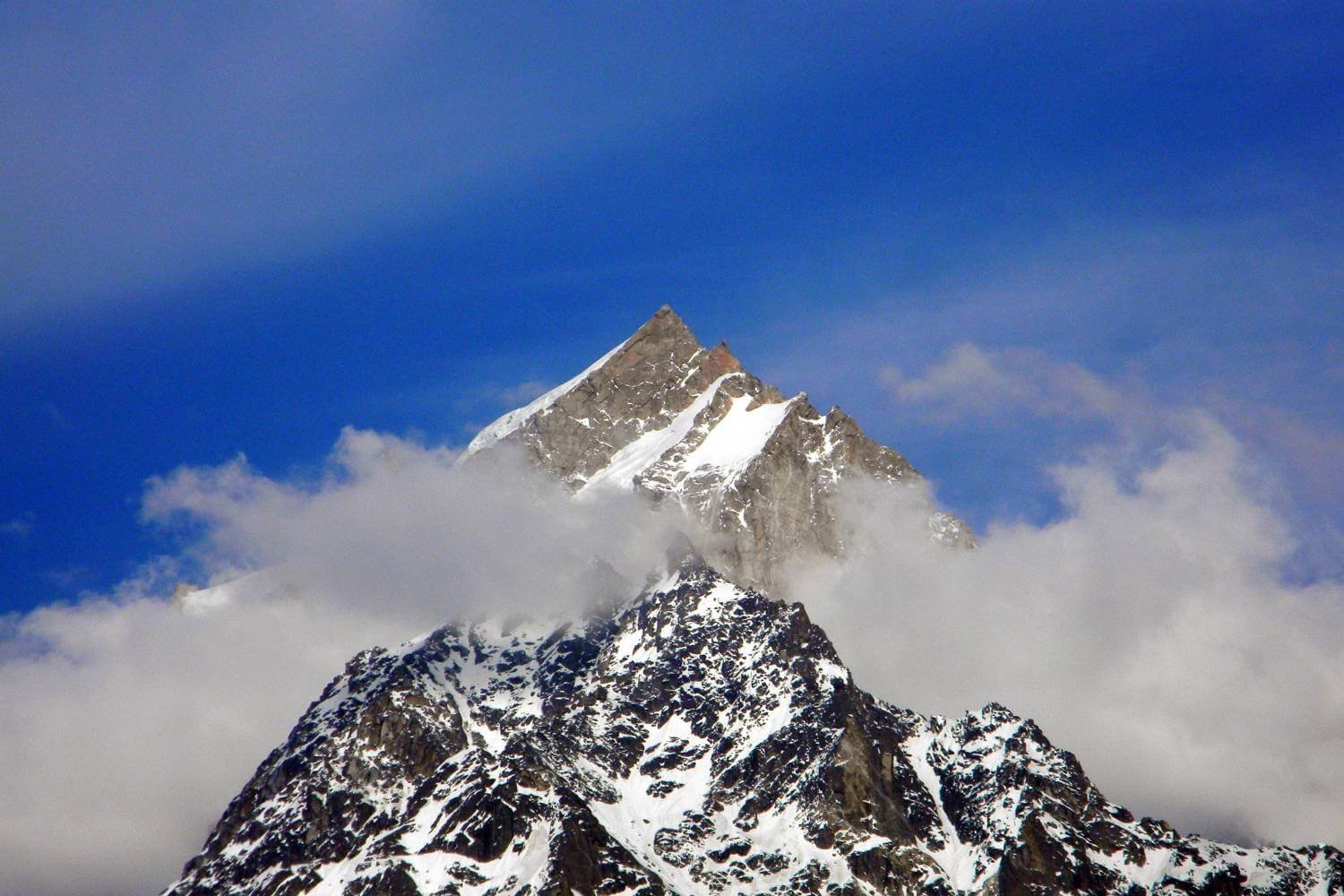
Kinnaur Kailash, a sacred site in the Himachal Pradesh area of Kinnaur is where Lord Shiva revealed his angry form, Virabhadra. The serene Kinnaur Valley is home to the demi-gods and this peak is referred to as Lord Shiva’s winter home. People visiting the Kinnaur Kailash can savour the breathtaking vistas of peaks that exceed 6050 metres above sea level. At Kinnaur Kailash stands a 79-foot-tall standing rock with a mysterious shivling that has a unique feature as it changes colour during the day and that is quite a mesmerising view seen during pilgrimage journeys. It is white just before sunrise, yellow just after sunrise, red just after sunset, and black just at night. Many people visit this location to complete the sacred parikrama, which begins in Morang and finishes in Kalpa.
The Hindu mythology dictates that every winter, Lord Shiva makes arrangements for the Hindu Deities to gather atop Kinner Kailash Peak. The Mahabharata says that Lord Shiva bestowed Pashupatastra upon Arjuna in this location as a reward. Also, the spot is regarded as the meeting point between Mata Parvati and Lord Shiva. The area is particularly revered as the birthplace of Goddess Parvati, where she used to honour and worship Lord Shiva. While trekking towards the holy Kinnaur valley, people get to share moments with the culture and traditions of the Kinnaur people.
Places to See Around:
- Batseri Village: Situated in the Kinnaur district of Himachal Pradesh, Batseri is known for its beauty as it offers amazing views of the Himalayas and provides amazing experiences to pilgrims and tourists during the pilgrimage journeys.
- Kapla Village: Kalpa is a settlement located above Reckong Peo, a Buddhist cultural hub, at a height of 2759 metres on the India-Tibetan route. The location has all the characteristics of a historic hamlet and is one of the many wonderful spots to visit near Kinnaur Kailash.
- Suicide Point: Located only a few kilometres away from the Kinnaur Kailash, the Suicide Point is quite known for its dangerous trench and vertical slopes. People visit the location during their journey towards Kinnaur and enjoy the heart throbbing views of the region.
- Tanglin Village: As devotees rise to Kinnaur Kailash, they’ll be welcomed to breathtaking vistas of Tangling hamlet nestled among towering mountain ranges. Located on the banks of the Sutlej, the journey takes an inclined slope immediately after Tangling, which makes it much more enjoyable.
- Chitkul Village: The Chitkul Village is renowned for producing some of the greatest and most expensive potatoes in the entire globe. The village is around 28 km from Sangla Valley, on the banks of the Baspa River.
Also Read: Best Treks in Himachal Pradesh
Shrikhand Mahadev Kailash in Himachal Pradesh, Panch Kailash

The Shrikhand Mahadev is believed to be the abode of Lord Shiva’s eldest son, Ganesha. The holy spot of Shrikhand Mahadev is located in the Jaun Village of Himachal Pradesh and is said to be considered among the toughest pilgrimage journeys during Panch Kailash Yatra. At 5227 metres above sea level, this sacred summit is regarded as a part of the Great Himalayan National Park which is accessible only during the Shravan month. Shrikhand Mahadev is home to a 75-foot-tall and 46-foot-thick Shivling that remains clear of snow even after significant snowfall. Near the Shrikhand Kailash Peak, there are other statues of Mata Parvati, Lord Ganesha, and Swami Karthik.
One of the unique features of the Shivling here depicts the face of Lord Shiva which has eyes, nose and hair matted together. The site also has several caves, and it’s believed that anything presented to Lord Shiva at Shrikhand Mahadev ends up in these caves.
According to the legends and stories, the divine mountain derives its name from ‘Sir Khandan’, which says that Demon King Ravana offered his head to Lord Shiva to impress him and in return, Shiva blessed him with immortality. Another legend tells of the demon Bhimasar, who desired the love of Goddess Parvati after Lord Shiva granted him the ability to destroy anything he touched. He desired to lay hands on Lord Shiva in order to obtain Goddess Parvati. Lord Vishnu intervened on their behalf, taking on the shape of Mohini, and persuaded him to dance with her. He died while dancing as he put his palm on his own head. The soil and water in this specific location are still scarlet red to this day.
Places to See Around:
- Bheem Dwari: Bheem Dwari is believed to be the place where one of the Pandava brothers, Bhima lived and later came to be known as Bheema’s Gate. The site also served as the entry point for Parvati Bageecha.
- Parvati Bageecha: Numerous flowers bloom in this lovely bagh, which also offers sweeping vistas of the villages around. During the monsoon season, Brahamkamal, the official flower of Uttarakhand, is also seen blossoming here. During the voyage, it serves as a halt point.
- Nayan Sarovar: The Nayan Sarovar, formed by the waters of melting glaciers surrounding it is like an eye and is said that a tear from Mata Parvati fell and formed this lake when she was unable to convince Shiv ji to stop his meditation. As a pilgrim, the Shrikhand Mahadev Yatra is deemed completed if you do not pay your final respects at this location.
- Bhim ki Bahi: When you get to the peak, you’ll find some boulders with strange symbols and inscriptions. Bhim ki Bahi was named because locals say Bheema kept an account of his expenses and finances here.
Also Read: Best Places to Visit in Himachal Pradesh
Manimahesh Kailash in Himachal Pradesh, Panch Kailash
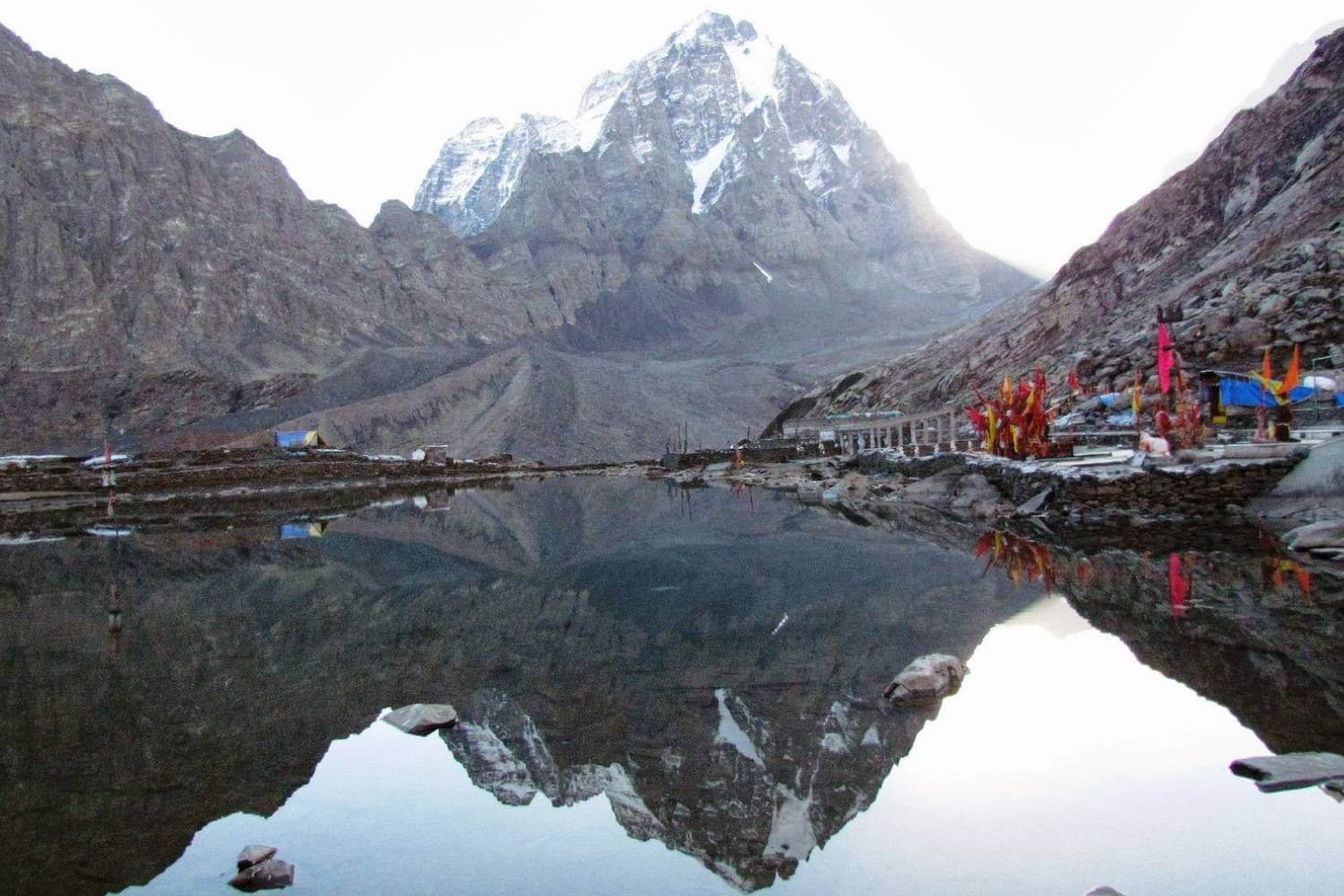
Manimahesh is one of the Panch parvats of the Panch Kailash yatra located in the Budhil Valley of the Chamba district of Himachal Pradesh. Due to the rock formation’s likeness to a Shiva Lingam, it is believed to be Lord Shiva’s incarnation on the mountainside. Trekking across glaciers and taking in the unspoiled splendour of the Himalayas are part of the journey to reach the Manimahesh summit. The significance of this journey is immense because the Shivlinga has a “mani” that reflects into the lake and the mountain of Manimahesh is situated at 13,000 feet.
The mountain is considered sacred because of the numerous folk tales associated with it. Hindu mythology tells the story of the formation of Manimahesh after the marriage of Lord Shiva and Devi Parvati. It is also believed that over a span of seven centuries, Lord Shiva underwent intense penance. Shiva’s Chaugan, a snowfield at the foot of the hill, is where some devotees believe that Shiva occasionally goes for walks with Goddess Parvati.
The Himachal Pradesh government has designated the Mani Mahesh Yatra as a state-level pilgrimage. Devotees believe that taking a holy bath and three circumambulations around the Manimahesh Lake cleanses Shiva worshippers of their sins. On the eighth day of the half-moon in the month of Bhadon, a fair is also arranged along the banks of the lake. Many pilgrims come here to atone for their sins and have them washed away in these sacred waters.
Whenever someone is unable to see the summit, it is interpreted as a sign of the Lord’s anger. Local tales say that anybody who attempted to ascend the summit was turned to stone.
Places to See around:
- Shiv Katori: The Shiv Katori is a small kund (reservoir) situated close to the Manimahesh and is believed to have formed from entangled hairs of Shivji’s hair during his penance. Devotees visit the Shiv Katori as they believe that Lord Shiva used to bathe in the icy cold water of Shiv Karotri.
- Gauri Kund: Gauri Kund is also said to have developed from tangled locks of Shivji’s hair while he was undergoing penance. The Gauri Kund lies close to the Manimahesh mountain and has lukewarm water in which Goddess Parvati used to bathe according to the devotees.
- Bhagsu Waterfall & Temple: Located a little away from the Manimahesh Kailash lies the Bhagsu Temple and waterfall which is a tourist attraction. People enjoy and relax in the flowing waters and pray in the temple located at the backside from where the water originates and forms a waterfall.
Weather Conditions
The weather conditions at high altitudes are quite frigid and can change anytime although it is advised to travel the Panch Kailash mountains of the Himalayas from April to June. There’s a good probability you’ll experience snowfall at high altitudes as well and snow can occasionally block all access routes, making the locations inaccessible. After June, the climate of India receives rainfall and hence travel becomes quite dangerous for travellers and pilgrims in the high-altitude regions as well as there are chances of landslides and flash floods.
Permits Required for Visitors (Especially for Kailash Mansarovar)
- Tibet Travel Permit issued by Tibet Tourism Bureau
- Alien’s Travel Permit
- Foreign Affairs Permit
- Military Permit
- Chinese Visa for Entering Tibet
Documents & Permits Required
- Original and Photocopy of ID Card (Aadhar Card, Voter ID, PAN card etc.)
- Medical Clearance and Medical Certificate of Fitness and Disclaimer (Filled by the trekker & registered practitioner)
- Children should be 15 years or older.
- Senior Citizens (above 75 years) require special medical clearance
- Adi Kailash & Om Parvat notarized affidavit. (for Adi Kailash Yatra)
- Inner line permit (issued by SDM Dharchula for travel to Indo-Nepal border)
- Police Verification / Passport
- Covid-19 vaccination certificate
Essential Tips for Panch Kailash Yatra
- Carry all the necessary medicines, dry foods, woollen clothes, sunscreens, raincoats, sunglasses, water bottles and other basic items during the tour.
- It is essential to carry Chinese currency as the Kailash Mansarovar Mountain is across the Indian borders and the accessibility to ATMs is quite limited.
- Stay updated about the weather conditions of the region before Panch Kailash Yatra registration to avoid any hassle.
- Apply for the Visa and permits to smoothen the journey to the China – Tibet border.
- Book accommodation before to avoid any confusion and obstacles later.
- Carry original passports and other essential documents as mentioned and required during the journey.
- Health and mental exercises are to be practised every day before the journey to avoid altitude sickness and other respiratory issues. Get blood levels, sugar levels and cholesterol levels checked before the yatra.
- Applicants who are legally not allowed to leave the country are not eligible for the yatra.
As said before, the Himalayas are significant throughout India, and this time is no exception. Spiritualism, enigma, and thrill converge amid Lord Shiva’s five sacred peaks and abodes. Kailash Mansarovar, Adi Kailash, Kinnaur Kailash, Shrikhand Mahadev Kailash, and Manimahesh Kailash are the Panch religious places in the middle of the magnificent Himalayas and are honoured as holy places of pilgrimage by people of nearly every religion, including Buddhism, Hinduism, Jainism, Chinese, and Bons.
To find your own path to heaven, walk in the gods’ and goddesses’ footsteps to experience a fruitful Panch Kailash Tour. The themes of the legends centre on the characteristics of the gods, their peaceful dwelling, their bodily remains, and the ultimate redemption that results from the force of Lord Shiva’s blessings.
Plan a memorable Panch Kailash Yatra tour 2024 with us to the abodes of Lord Shiva at Panch Kailash. For more information about Panch Kailash Yatra Tour Package Call us at +91-9310109466.
Like & follow us on our following official social media channels
Facebook | Twitter | Linkedin | Instagram | Youtube
Also Check Out: Popular India Tours | Tour Packages | India Tour Packages | International Tour Packages
International Trending Holiday Destinations – Nepal Tours | Bhutan Tours | Singapore Tour | Thailand Tours | Sri Lanka Tours | Maldives Tours | Dubai Tours | Indonesia Tours
Other Popular Trending Holiday Destinations in India – Kashmir Tour | Himachal Tour | Uttarakhand Tour | Rajasthan Tour | Gujarat Tour | Sikkim Tour | Kerala Tour | Andaman Tour | Madhya Pradesh Tour | North East Tours | Uttar Pradesh Tours
Tour Packages by Interest – Adventure Packages | Wildlife Packages | Pilgrimage Packages | Heritage Packages | Hill Station Packages | Weekend Packages | Honeymoon Packages | Beach Packages | Chardham Packages | Trekking Packages
Other Informative Temple Travel Guide Blogs to Read
- Popular Temples in Rishikesh
- Best Temples Photography in India
- Famous Temples to Visit in India
- Popular Temples in Telangana
- Popular Temples in Andhra Pradesh
- Yamunotri Temple Information
- Gangotri Temple Yatra Information
- Rudranath Temple Travel Guide
- Char Dham Yatra Travel Guide
- Best Places to Visit in Varanasi
- Important Pilgrimage Tours in India
Other Interesting Adventure & Trekking Travel Guide Blogs to Read
- Best Trekking Trails in Ladakh
- Best Trekking Places in Uttarakhand
- Panch Kailash Yatra Trek Information
- Best Trekking Places in Sikkim
- Top Adventure Tourism Sports in India
- Best Trekking Places in Himachal
- Best Winter Treks in India
- Best Treks in India Himalayas
- Top Summer Treks to Do in Uttarakhand
- Best Summer Treks in India
Other Interesting North East India Travel Guide Blogs to Read
- Best Honeymoon Destinations in Sikkim
- Agartala Tourism- Best Places to Visit & Things to Do
- Best Places to Visit in Meghalaya
- Top Places to Visit in North East India
- Best Places to Visit in Sikkim
- Best Places to Visit in North East India Tour
- Shillong Meghalaya Tourism Information
- Best Places to Visit in Cherrapunji
Other Interesting Destinations Travel Guide Blogs to Read
- Best Places to Visit in Agra
- Best Places to Visit in Summer in South India
- Popular Hindu Pilgrimage Tours in India
- Best Places to Visit in Uttar Pradesh
- Best Weekend Destinations from Delhi
- 10 Best Destinations in India to Take Your Mom on a Holiday Vacation as a Surprise Gift for Her Birthday
- Top 6 Senior Citizen-Friendly Destinations Near Delhi
- Best Places to Visit in Gujarat
- Popular Temples in Andhra Pradesh
- Best Places to Visit in Leh Ladakh
- Cherrapunji Travel & Tourism Guide
- Palolem Beach Goa Travel Guide
- Munnar Tourism – Top Tourist Places & Things to Do
- Alleppey Tourism- Best Places to Visit
- Top Places to Visit in Patnitop
- Best Places to Visit in Jammu and Kashmir
- Must Visit Waterfalls in Karnataka
- Gulmarg Tourism- Top Places to Visit
- Best Places to Visit in Patnitop
- Best Places to Visit in Tamil Nadu
Other Interesting Uttarakhand Travel Guide Blogs to Read
- Top Honeymoon Destinations in Uttarakhand
- Must Visit Waterfalls in Uttarakhand
- Best Places to Visit in Uttarakhand
- Badrinath Kedarnath Yatra Travel Guide
- Best Places to Visit with Family in Uttarakhand
- Best Hill Stations to Visit in Uttarakhand
- Best Tourist Places in Rishikesh
- Chardham Yatra Travel Guide
- Best Places to Visit in Mussoorie
- Top Things to Do in Uttarakhand
- Best Places to Visit in Nainital
- Yamunotri Temple Information
- Gangotri Temple Information
- Badrinath Temple Information
- Kedarnath Temple Information
- Best Places to Visit in Harsil Valley
- Best Places to Visit in Uttarkashi
- Best Places to Visit in Haridwar
- Best Places to Visit in Chopta
- Auli Hill Station Travel Guide
- Kraunch Hills Hotel & Restaurant – The Ultimate Place for a Memorable Stay Near Kedarnath Dham
Other Interesting Himachal Travel Guide Blogs to Read
- Best Places to Explore in Dharamshala
- Best Places to Visit in Shimla
- Best Places to Visit in Manali
- Top Tourist Destinations in Himachal Pradesh
- Best Weekend Destinations in Himachal Pradesh
- Best Places to Visit in Spiti Valley Himachal
- Best Places to Visit in Chail Himachal Pradesh
- Best Places to Visit in Himachal Pradesh
Other Interesting Madhya Pradesh Travel Guide Blogs to Read
- Best Places to Visit in Amarkantak
- Best Places to Visit in Ujjain
- Best Places to Visit in Khajuraho Madhya Pradesh
- Best Places to Visit in Jabalpur Madhya Pradesh
- Madhya Pradesh Tourism Guide
- Best Places to Visit in Bhopal
- Top Tourist Destinations of Madhya Pradesh
Other Interesting India Travel Guide Blogs to Read
- Best Places to Visit in Varanasi
- Golden Triangle India Travel Guide
- Best Time to Visit India
- Best Places to Visit in Andaman & Nicobar
- Best Places to Visit in October in India
- Top Religious Destinations in India
- Best Places to Visit in September in India
- Popular Temples in India
- Best Places to Visit in North India
- Must Visit UNESCO Heritage Sites in India
- Best Places to See Snowfall in India
- Best Hill Stations to Visit in India
- Best Honeymoon Destinations in India
- Best Winter Tourist Destinations in India
- Best Places to Visit in East India
- Best Beaches to Visit in India
- Pilgrimage Tourist Places in India
- Popular Heritage Tourist Places in India
- Top Tourist Destinations to Explore in India
- Best Places to Visit Near Bandhavgarh
Other Interesting Rajasthan Travel Guide Blogs to Read
- Best Tourist Places to Visit in Udaipur Rajasthan
- Best Places to Visit in Jaipur Rajasthan
- Best Places to Visit in Rajasthan
- Mount Abu Tourism- Best Places to Visit & Things to Do
- Best Places to Visit in Pushkar Rajasthan
- Top Places to Explore in Jaisalmer Rajasthan
- Best Sightseeing Places in Jodhpur Rajasthan
- Ranthambore Jungle Safari Trip
- Ranthambore National Park Travel Guide
Other Interesting South Travel Guide Blogs to Read
- Popular Temples to Visit in Telangana
- Best Places to Visit in South India with Family
- Must Visit Waterfalls in Karnataka
- Karnataka Pilgrimage Tour- Must Visit Places
- Jog Falls – Most Beautiful Waterfalls in Karnataka
- Explore the Iconic Bangalore Palace in Karnataka
- Must Visit Temples in Andhra Pradesh
- Best Places to Visit in Tamil Nadu
Other Interesting Kerala Travel Guide Blogs to Read
- Best Hill Stations to Visit in Kerala
- Top Things to Do in Kerala
- Munnar Tourism Guide
- Best Places to Visit in Alleppey
- Best Places to Explore in Kovalam
- Top Tourist Places in Kerala
- Veli Tourist Village in Kerala
Other Interesting International Travel Guide Blogs to Read
- Best Places to Visit in Bhutan
- Best Places to Visit in Thailand
- Best Places to Visit in Krabi Thailand
- Best Places to Visit in Dubai with Family
- Best Places to Visit in Pattay Thailand
- How to Plan a Perfect Dubai Trip from India?
- Top Honeymoon Destinations in Thailand
- The Top Beach Resorts to Stay in Maldives for Your Dream Vacation
- The Best Islands in Maldives for a Relaxing Vacation
- Best Places to Visit in Indonesia
- Best Places to Visit in Paro Bhutan
Other Interesting Wildlife Travel Guide Blogs to Read
- Gir National Park Travel Guide
- Manas National Park Assam
- Best Places to Stay in Ranthambore
- Pench National Park Travel Guide
- How to Plan a Jungle Safari Trip to Ranthambore National Park?
- Famous National Parks of India
- Best Places to Visit Near Kaziranga National Park
- Jim Corbett National Park & Tiger Reserve
- Ranthambore National Park & Tiger Reserve
- Best National Parks to Visit in Summer Season in India
- Kaziranga National Park: A Comprehensive Travel Guide

